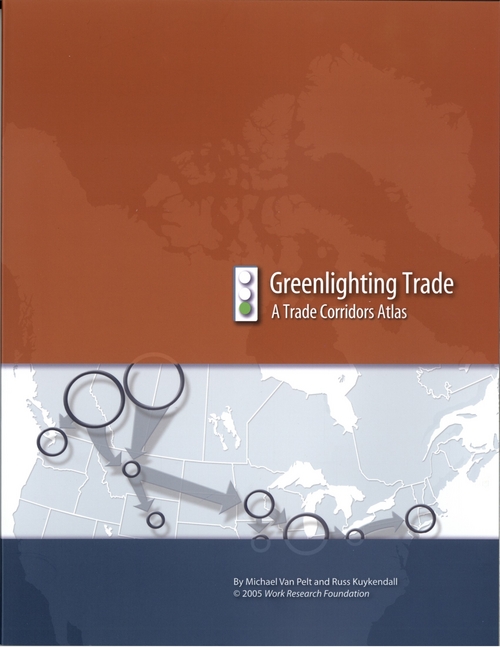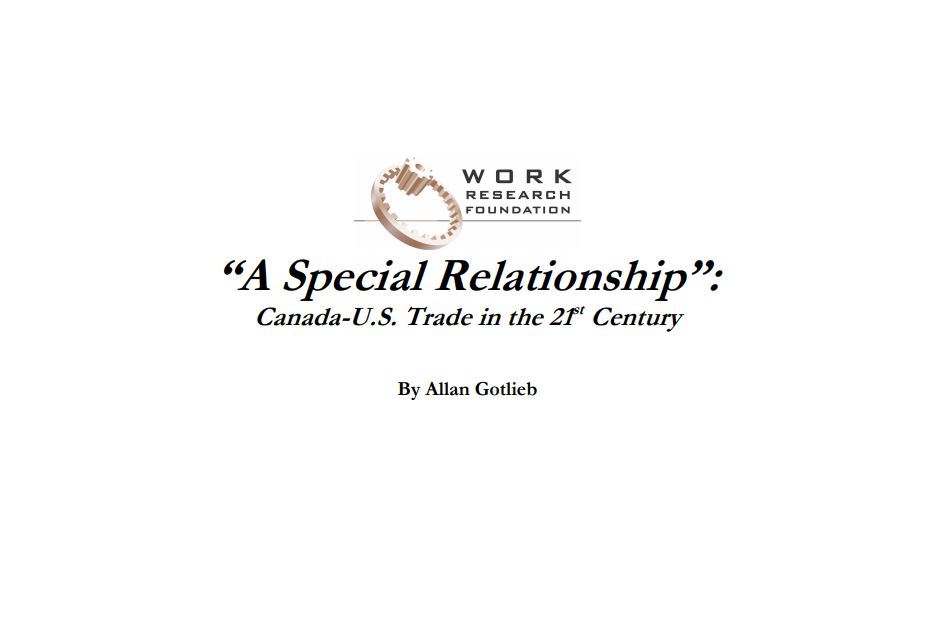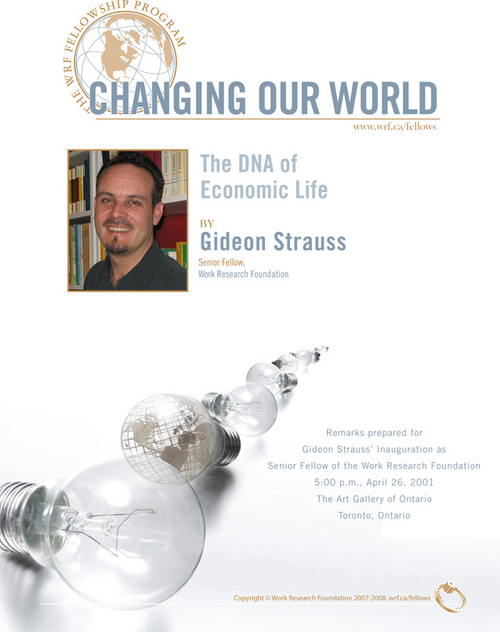Our Research

Six Trade Corridors to the US: The Lifeblood of Canada's Economy by Russ Kuykendall, in Policy Options (July-August, 2006). Kuykendall drills down on the numbers, and finds that Canada-US trade can be broken into six corridors, largely along regional and sectoral lines, such as the Ontario-Michigan automotive corridor, and the Alberta energy corridor.

A comprehensive investigative research report that gives the construction industry a better understanding of the various factors relating to worker mobility in the large industrial and civil engineering sectors of the industry. Using a survey of mobile workers, the study analyzes results, and offers recommendations based on the survey findings.

Greenlighting Trade: A Trade Corridors Atlas, written by Senior Researcher Russ Kuykendall, explains the "big idea" behind trade corridors. The study argues that the six largest sectors of Canada's export trade to the United States illustrate the usefulness of trade corridors. The Atlas proposes concrete next steps, to thinking about the movement of trade in North America. Finally it proposes a philosophical framework grounded in the idea of "sphere sovereignty" that informs our development of trade corridors and that suggests trade requires the active participation of institutions, organizations and associations. Trade and trade corridors cannot be framed by government-to-government relationships alone.

Sample chapter from Greenlighting Trade: A Trade Corridors Atlas (2005), written by Senior Researcher Russ Kuykendall.

A compilation of the findings and ideas tabled at the Stepping Forward 2005 conference. This document is invaluable for the wealth of experience it brings together and distills to address some of the most serious challenges facing the Construction Industry.

Times in Hamilton are changing. Theories of secularization have been discredited in many circles as unable to account for the true complexity of human life. People are taking a renewed interest in the role played by religion, both in theoretical perspective and in personal commitment.
Living on the Streets suggests that established religious communities—churches, synagogues, mosques, and the like—are institutions with a critical role to play in the urban life of Hamilton. In this study researchers Michael Van Pelt and Richard Greydanus work through several case studies of churches in the city of Hamilton, and examine in what ways they contribute to urban life. Working from within New Urbanist models this study presents the idea that churches transcend social boundaries, sustain immanent community engagement and services, draw membership back into urban downtowns, cultivate private investment and protect sacred spaces. The ideas from Living on the Streets can inform many different urban contexts, and were used as the basis for our presentations at the World Urban Forum, 2006.
Published by Cardus, formerly known as Work Research Foundation.

A Special Relationship: Canada-U.S. Trade in the 21st Century, by Allan Gotlieb, former Canadian Ambassador to the United States and Under-Secretary of State for External Affairs. The formation of various “trade corridor” organizations, argues Gotlieb, reflects a profound reality that underlines the history of our relationship: North American integration has resulted not from high-level public policy nor central direction from activity that is overwhelmingly bottom-up, reflecting the vast preferences and habits of our population, from one end of our country to the other. To put it in its starkest terms, it is these habits or preferences, not the policies of government, that turned the economic axis of Canada from East-West to North-South. Read Gotlieb's remarks, prepared for the Trade Corridors Roundtable, Monday April 25th 2005, Toronto.

Moving Trade (2003), an introduction to Trade Corridors by Michael Van Pelt, President of the Work Research Foundation. Never in the history of our world has there been so much debate and discussion about moving trade. Behind the technical and sophisticated discussions about security, border issues, transportation infrastructure, traffic, economic development, urban planning, customs and immigration, or international relations is one central concern—moving trade.

In remarks prepared for the 2003 Civitas Conference, Ray Pennings puts forth the idea that industrial relations and company profits would benefit if conservatives considered the ways in which worker organizations can promote freedom and choice, participation in institutions, and non-governmental solutions to social problems.

Taking as its basis a thorough literature review and data collected from interviews with a range of construction industry leaders, this study is an informed and descriptive discussion of trends and movements within the industry. Ray Pennings provides insight and analysis of major issues concerning the construction industry, such as construction labour relations and industry innovations.


This document assesses the operation of Job Targeting Programs and their impact on the construction industry in Canada. The study raises a number of pertinent questions about JTPs and concludes that in practice, JTPs are guided by motives that go beyond cost competition and are part of an attempt to defend a particular system of craft organization in the construction industry.

